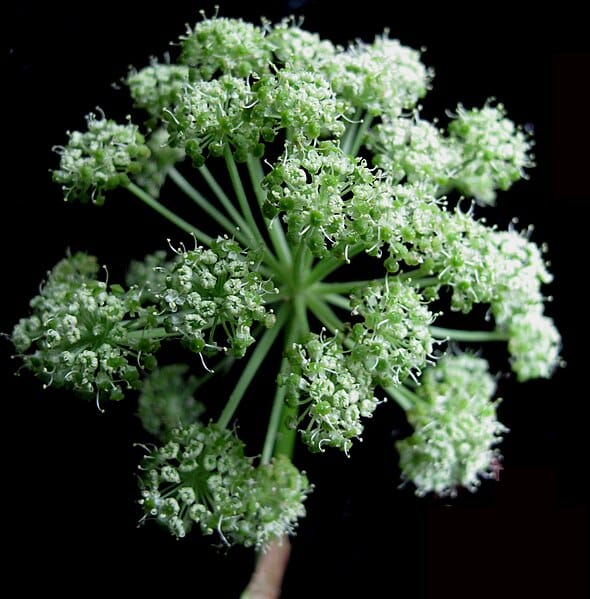Great Angelica Identification – Angelica atropurpurea
Heads up
When venturing into the world of plants, one species that might catch your eye is the Great Angelica, scientifically named Angelica atropurpurea. Hailing from the Apiaceae family, which is sometimes called the carrot family, this plant stands out not just because of its impressive size, but also due to its distinct characteristics.
Great Angelica: Key Parts in Photos



Where to find it
If you’re wandering in wet meadows or along ditches that collect water, you’re in Great Angelica territory. This plant has a preference for wet environments like seeps, fens, and floodplains. Whether it’s in part shade or directly under the sun, Great Angelica thrives, reaching impressive heights up to 8 feet.
How to identify Great Angelica
The stem of the Great Angelica is sturdy, smooth and hollow inside. As the plant matures, this stem takes on a purple hue, giving a hint to one of its common names, Purple-stemmed Angelica.
Great Angelica leaves are compound, which means they’re made of multiple parts, or leaflets. In Great Angelica, the lower leaves can be up to 2 feet long and wide, consisting of 3 to 5 leaflets. These leaflets can be lance-shaped to elliptical. Their edges are sharply toothed, and if you flip them over, you might feel fine hairs on the underside.
Great Angelica flowers are arranged in what’s known as an umbel, a term that refers to flower clusters where stalks of nearly equal length spring from a common point, somewhat like the ribs of an umbrella. Each umbel of the Great Angelica spans up to 9 inches across and consists of smaller umbellets, each housing up to more than 40 star-shaped flowers. These tiny flowers are green to whitish, measuring about a quarter inch across, featuring five petals and five stamens, which are the parts that produce pollen. Surrounding the base of each flower, you’ll find five oval shaped sepals which protect the flower bud. After the flowering season, the plant produces fruits. The Great Angelica’s fruits are oblong to elliptical, quite small, and have winged edges.
